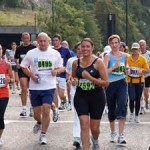Stick to the basics when planning for a race!
Nothing new on race day. This applies to food, hydration, clothing, and pacing. If you haven’t tried it in training, don’t do it in racing.
Research ahead of time. Do an online search of restaurants, grocery stores and markets in the area. Make reservations for dinner the night before. Plan out every detail of your breakfast.
Plan morning-logistics. Expecting traffic? Parking troubles? Plan ahead. Know exactly how you’re getting to the starting line down to the route, the mode, the exact departure time, closed roads and traffic control information, and the exact drop off or parking details.
 Subscribe
Subscribe

